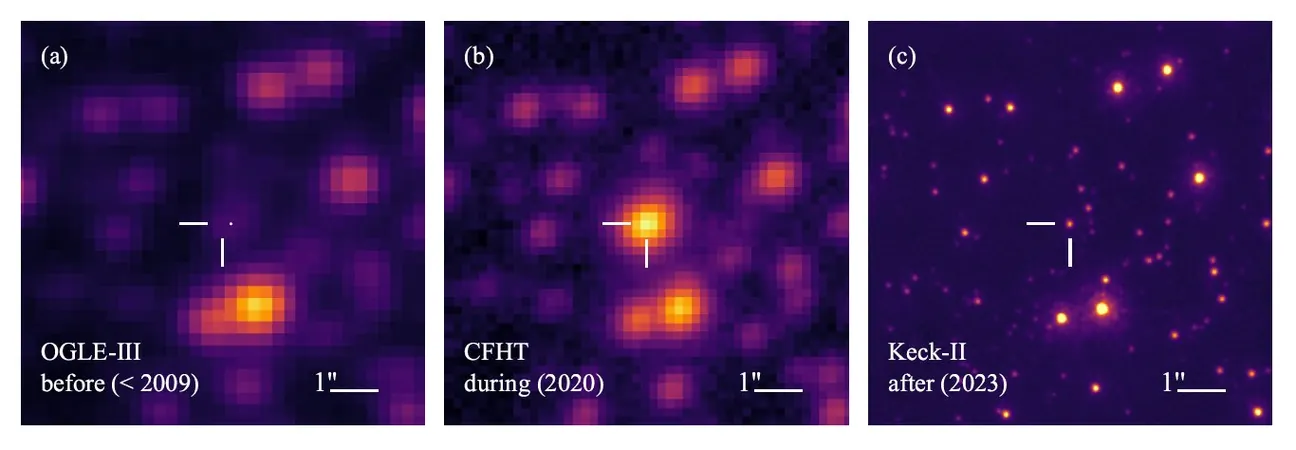
Earth-Like Planet Around a Dead Star Offers Glimpse into Humanity's Cosmic Fate
2024-09-26
Earth-Like Planet Around a Dead Star Offers Glimpse into Humanity's Cosmic Fate
Astronomers have made a groundbreaking discovery: an Earth-like planet located 4,000 light years away in the Milky Way may serve as a harbinger for Earth's future, particularly as our sun transitions into a white dwarf. This revelation not only excites researchers but also raises questions about the long-term survival of life on our planet.
The recently identified planetary system, studied by astronomers at UC Berkeley with the aid of the Keck 10-meter telescope in Hawaii, mirrors the sun-Earth configuration: it features a white dwarf star, approximately half the mass of our sun, with an Earth-sized planet in a more distant orbit—about twice that of Earth's current distance from the sun.
In the distant future, approximately 5 billion years from now, scientists predict our sun will enter its red giant phase. It will expand dramatically, potentially engulfing Mercury and Venus, while Earth's fate hangs in balance. As the sun swells, its decreasing mass could push Earth into a more distant orbit, possibly allowing it to survive—but only if it isn't consumed by the sun's expansion first.
Research suggests that the sun could become a red giant within a billion years, vaporizing Earth's oceans and radically altering our planet's climate long before it faces the risk of being engulfed. The planetary system's discovery, set to be discussed in the upcoming issue of Nature Astronomy, offers insights into the life cycle of main-sequence stars like our sun and the subsequent impacts on their orbiting planets.
Currently, the prospects for Earth’s continued habitability are limited to roughly another billion years due to the runaway greenhouse effect, which is expected to evaporate our oceans irrespective of the sun's eventual fate. Jessica Lu, associate professor of astronomy at UC Berkeley, noted, "The most critical question is whether Earth will be swallowed by the sun during its red giant phase."
Although the newfound Earth-like planet likely lies outside the habitable zone of its dim white dwarf, it may have experienced habitable conditions during its host star's earlier life as a sun-like star. This discovery emphasizes the uncertainty surrounding Earth's potential to harbor life through the sun's evolution.
This distant planetary system was first observed during a "microlensing event" in 2020 when it amplified the light from a distant background star. Designated KMT-2020-BLG-0414, this intriguing event highlighted how the gravitational pull of the white dwarf and its planets could dramatically alter the brightness of other stars.
The findings also shed light on another intriguing aspect of this planetary system. Alongside the Earth-like planet, astronomers identified a massive planet, likely a brown dwarf that is roughly 17 times the mass of Jupiter. Such discoveries underscore the variety of world systems that exist beyond our solar system.
Future observations are expected to utilize advanced telescopes such as NASA’s upcoming Nancy Grace Roman Telescope, launching in 2027, to unravel more about these distant planetary systems. These observations could provide more evidence about the nature of stars hosting exoplanets, ultimately refining our understanding of cosmic configurations.
As researchers continue to explore these distant worlds, they raise an intriguing possibility for humanity's survival. If Earth becomes uninhabitable, several moons in our solar system—like Europa, Ganymede, and Enceladus—are thought to harbor frozen oceans beneath their icy crusts. As our sun evolves into a red giant and the habitable zone shifts outward, these moons may transform into new ocean planets, potentially offering refuge for future generations of humans.
The discovery of this distant Earth-like planet not only excites astronomers but also serves as a reminder of the transient nature of our world, captivatingly weaving the narrative of human existence into the grand tapestry of the cosmos. The quest for knowledge continues, and with it, a deeper understanding of our place in the universe unfolds.




 Brasil (PT)
Brasil (PT)
 Canada (EN)
Canada (EN)
 Chile (ES)
Chile (ES)
 España (ES)
España (ES)
 France (FR)
France (FR)
 Hong Kong (EN)
Hong Kong (EN)
 Italia (IT)
Italia (IT)
 日本 (JA)
日本 (JA)
 Magyarország (HU)
Magyarország (HU)
 Norge (NO)
Norge (NO)
 Polska (PL)
Polska (PL)
 Schweiz (DE)
Schweiz (DE)
 Singapore (EN)
Singapore (EN)
 Sverige (SV)
Sverige (SV)
 Suomi (FI)
Suomi (FI)
 Türkiye (TR)
Türkiye (TR)